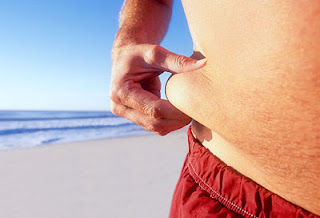The holidays are here and many of you are headed out of town...but don't forget to take your good exercise and nutrition habits with you! Here are a few tips to help ensure you start 2013 on the right track (and without extra padding).
Make the best possible choice: It's pretty hard to commit to not having any dessert over the holidays. But it feels even worse to go completely off your diet plan. Instead, simply make the best possible decision given your choices. Let's say your in-laws have gluten-free cookies, ice cream and dark chocolate to choose from for dessert. Choose the dark chocolate! It's rich, highly satiating, and won't throw you into insulin overdrive the way grains (even gluten-free ones) can. As a second choice, I would go with ice cream (preferably organic). Even though it has sugar and dairy, ice cream is a better choice than a baked good because it is high in quality fats, does not contain grains, and is highly satiating (meaning you need to eat less to feel full).
Take 20 minutes for yourself: Nothing feels worse than not making the time to take care of yourself. Many of you might feel selfish leaving your family to head out for a walk or a sprint, but taking the time to look after yourself will actually allow you to be more present and calm for your loved ones. I know what you're thinking: Is 20 minutes enough time to get a good workout in? Yes! Burst training, which requires minimal equipment, is the easiest and most time efficient way to keep your metabolism revved while on the road. Interestingly enough, the more you take care of your body, the more you want to take care of your body. Something as simple as heading out to do some sprints around the block can actually help you make better choices when it comes time for dinner.
Hydrate: Travel, cold weather, alcohol, stress (and just generally being out of your usual routine) all lead to dehydration! Make sure you drink 1/2 your body weight in ounces of water daily AND avoid tap water as much as possible. Just the slightest dehydration leads to increased cortisol, lethargy, false hunger and weight gain.
Check in: Let's say you ate something that you regret. It happens. You feel bad that the in-laws went through the trouble of making gluten-free biscuits, or maybe your aunt's dessert was too hard to resist. So check in for a few minutes. How do you feel? Instead of beating yourself up, use this moment to collect information. With just a little attention, what you notice might surprise you, such as: "After five weeks of not having grains, I had grains and instantly had to take a nap" or "After two months of not having dairy, I ate it and my indigestion came back." By taking note of how these foods make you feel, you're setting yourself up to more effortlessly avoid them in the future.
Cheers to a happy holiday and a very healthy 2013!

























